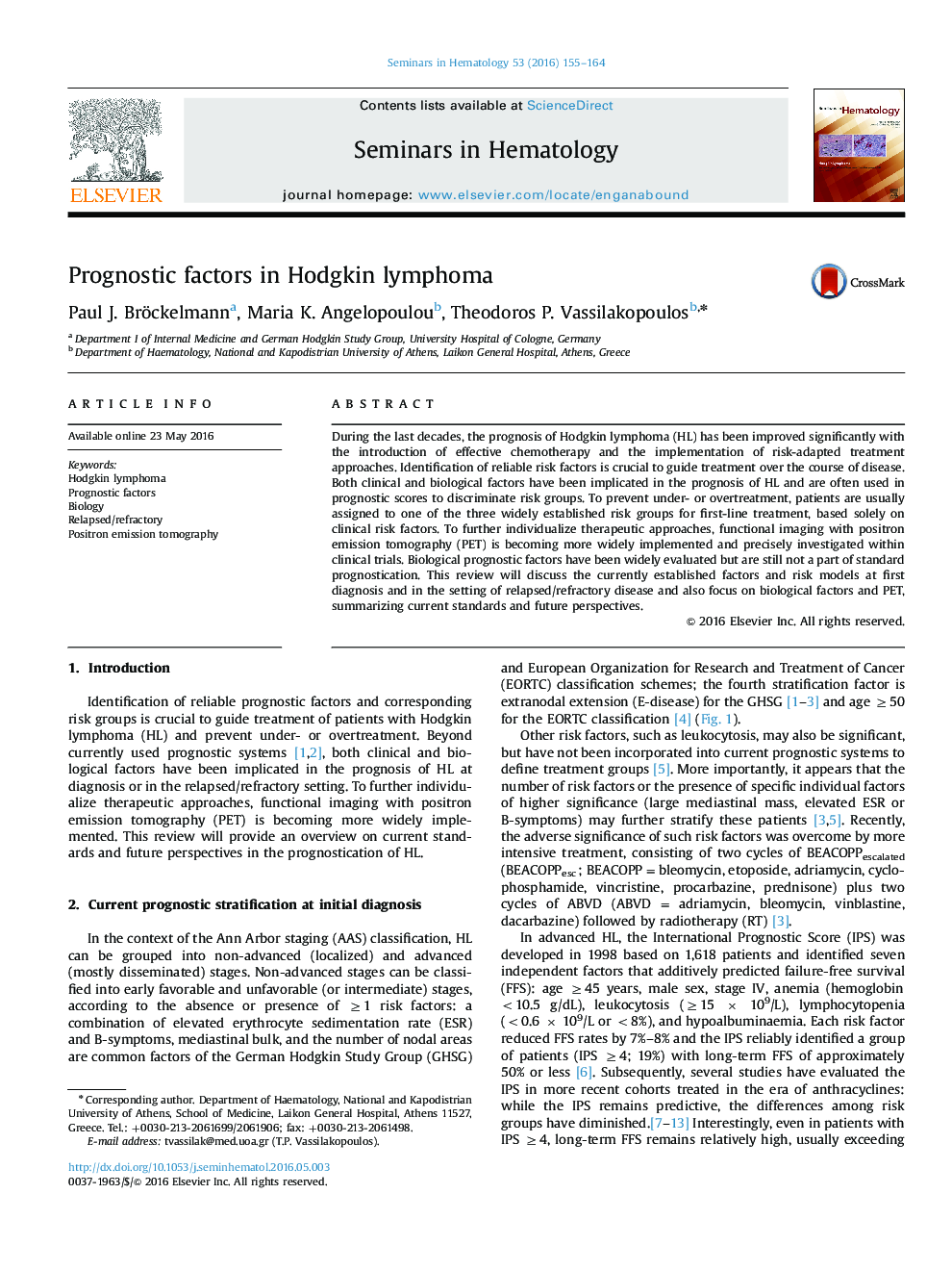| Article ID | Journal | Published Year | Pages | File Type |
|---|---|---|---|---|
| 3333363 | Seminars in Hematology | 2016 | 10 Pages |
During the last decades, the prognosis of Hodgkin lymphoma (HL) has been improved significantly with the introduction of effective chemotherapy and the implementation of risk-adapted treatment approaches. Identification of reliable risk factors is crucial to guide treatment over the course of disease. Both clinical and biological factors have been implicated in the prognosis of HL and are often used in prognostic scores to discriminate risk groups. To prevent under- or overtreatment, patients are usually assigned to one of the three widely established risk groups for first-line treatment, based solely on clinical risk factors. To further individualize therapeutic approaches, functional imaging with positron emission tomography (PET) is becoming more widely implemented and precisely investigated within clinical trials. Biological prognostic factors have been widely evaluated but are still not a part of standard prognostication. This review will discuss the currently established factors and risk models at first diagnosis and in the setting of relapsed/refractory disease and also focus on biological factors and PET, summarizing current standards and future perspectives.
